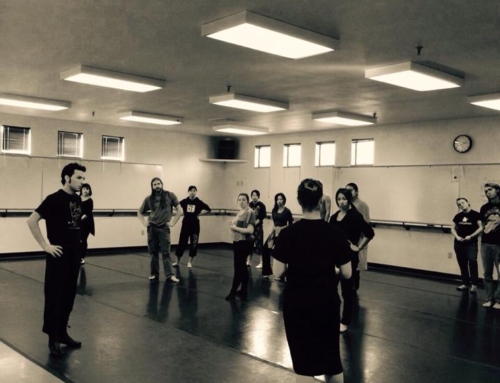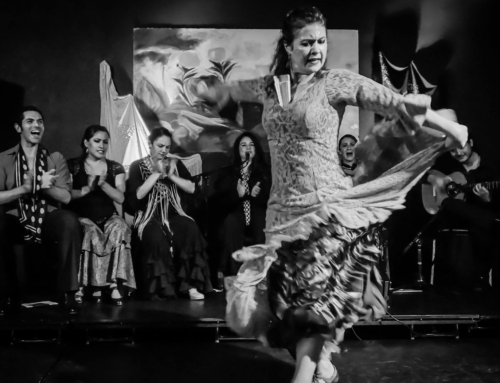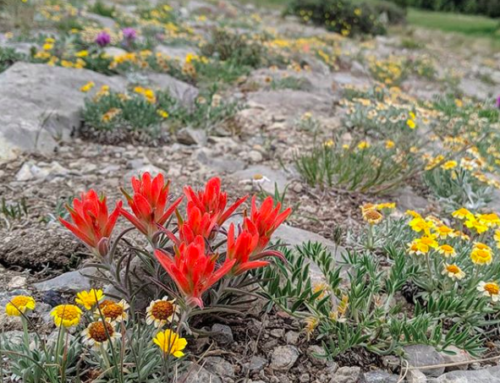I remember hearing one of my mentors once say to someone else, she’s been extremely lucky in her career. At the time, I thought to myself, luck has nothing to do with it. She has worked her butt off, she pours her heart and soul into her movements. Her success is blood and sweat and tears, not talent, and not luck. But the truth is, there is some luck involved. Opportunities that arise from being in the right place at the right time. Taking class with a certain someone, taking a job that leads to another that leads to another that leads to another….there’s a lot of luck. But an opportunity without that blood, sweat, and tears will only be a dead end. There’s also the idea that opportunity rarely comes a-knocking, and so often as artists we have to create our own opportunities, and chase after oh-so-many other opportunities before we get an affirmative yes and something finally comes through. The number of rejections and dashed hopes makes the successes worth that much more.
Being an artist is not a popularity contest either. Nowadays with Facebook, I see colleagues posting so many photos, with so many gigs–they have without a doubt won the popularity contest in their area or at least on social media. Personally, I’m not interested in winning a popularity contest (though it sure would be helpful financially); I dance to express, to explore, to understand myself and the world better, and most of all to connect with other humans in a way every day life doesn’t let me. I also take risks in my dancing. I don’t want to simply reiterate steps and entire dances someone else handed to me (not that there’s anything wrong with that as long as you give credit where credit is due). Creating work is about deepening an understanding–of dance, of the self, of your dance partner, of others, of the world, of a narrative….the list could go on and on. I think about choreographers who have had the guts to take risks. Thinking about William Forsythe, who was booed off stage in his early works, other dancers that took a tougher road just to pursue a freedom of expression beyond what a company could give them, there are countless examples, not only in dance, but in all the arts.
I had a lot of luck early on, some big recognitions, some great opportunities. Those achievements helped give me the confidence to pursue dance, though I’d say my mentors and family gave me the real support. And every day I value more and more the following which popped up as a comment on a Facebook post:
“El artista se hace a base de una carrera completa no de la opinion de unos pocos que la mayoría de las veces no tienen ni idea. El mejor premio para un artista es disfrutar lo que hace cada día, trabajando mucho y sin esperar ninguna premio, solo la satisfacción de saber uno mismo que hiciste lo mejor que pudiste y disfrutaste de ello. Al final es lo que queda, eso y el respeto que se consigue día a día por los compañeros.” –A. Granjero
“The artist is made from a complete career, not from the opinions of a few who usually have no idea [about the art]. The best prize for an artist is to enjoy what he does every day, working hard, without expecting any prize, just the satisfaction of knowing for himself that he did the best he could and enjoyed it. At the end that’s all that’s left, that and the respect that you gain day by day from your peers.”
I’ve been working with a group of young artists this week, ages 15-18, and it’s given me a new perspective on my own career. They’re at that point in their lives where they are thinking of pursuing the arts professionally, and that’s a tough choice to make when it’s one of the most unstable and (can be) financially un-rewarding. Watching them grow this week, I’ve never been more thankful to have chosen the path I’ve chosen–I’m creating the type of work I want to create, exploring dance and flamenco in ways I did not even know were possible when I was their age. Adding to the above quote, I think it’s our job as artists to keep growing, challenging ourselves as much as the art form and/or society, and when we’re teaching, challenging our students too.
To create deep and meaningful work, an artist’s path is a challenge and even if your vision is clear, finding/creating your voice is almost always a zig-zagging path.








Leave A Comment